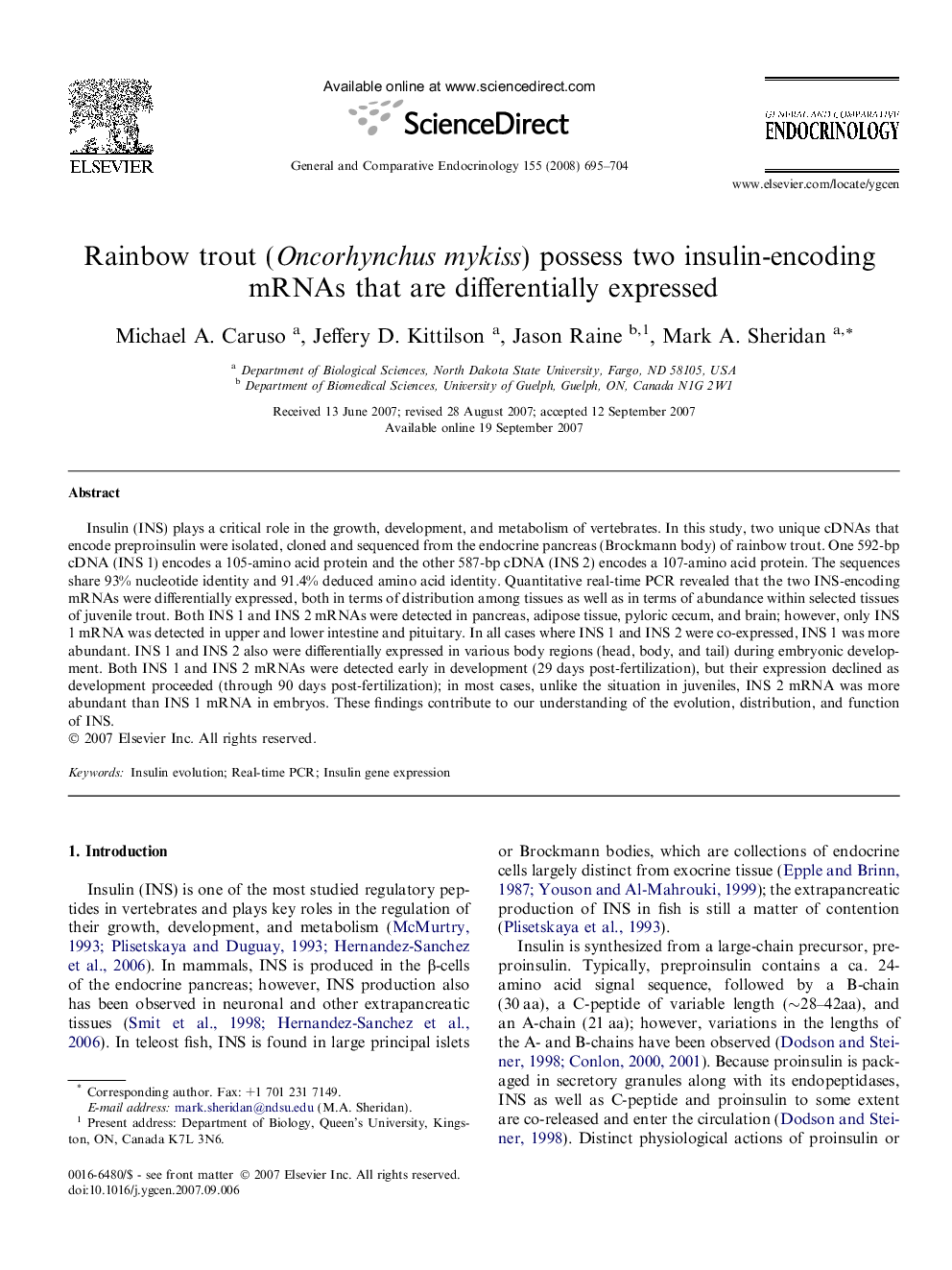| Article ID | Journal | Published Year | Pages | File Type |
|---|---|---|---|---|
| 2802055 | General and Comparative Endocrinology | 2008 | 10 Pages |
Insulin (INS) plays a critical role in the growth, development, and metabolism of vertebrates. In this study, two unique cDNAs that encode preproinsulin were isolated, cloned and sequenced from the endocrine pancreas (Brockmann body) of rainbow trout. One 592-bp cDNA (INS 1) encodes a 105-amino acid protein and the other 587-bp cDNA (INS 2) encodes a 107-amino acid protein. The sequences share 93% nucleotide identity and 91.4% deduced amino acid identity. Quantitative real-time PCR revealed that the two INS-encoding mRNAs were differentially expressed, both in terms of distribution among tissues as well as in terms of abundance within selected tissues of juvenile trout. Both INS 1 and INS 2 mRNAs were detected in pancreas, adipose tissue, pyloric cecum, and brain; however, only INS 1 mRNA was detected in upper and lower intestine and pituitary. In all cases where INS 1 and INS 2 were co-expressed, INS 1 was more abundant. INS 1 and INS 2 also were differentially expressed in various body regions (head, body, and tail) during embryonic development. Both INS 1 and INS 2 mRNAs were detected early in development (29 days post-fertilization), but their expression declined as development proceeded (through 90 days post-fertilization); in most cases, unlike the situation in juveniles, INS 2 mRNA was more abundant than INS 1 mRNA in embryos. These findings contribute to our understanding of the evolution, distribution, and function of INS.
